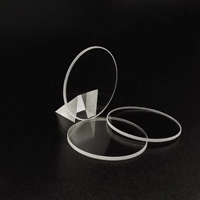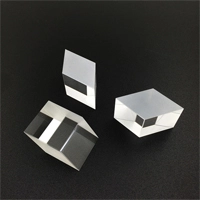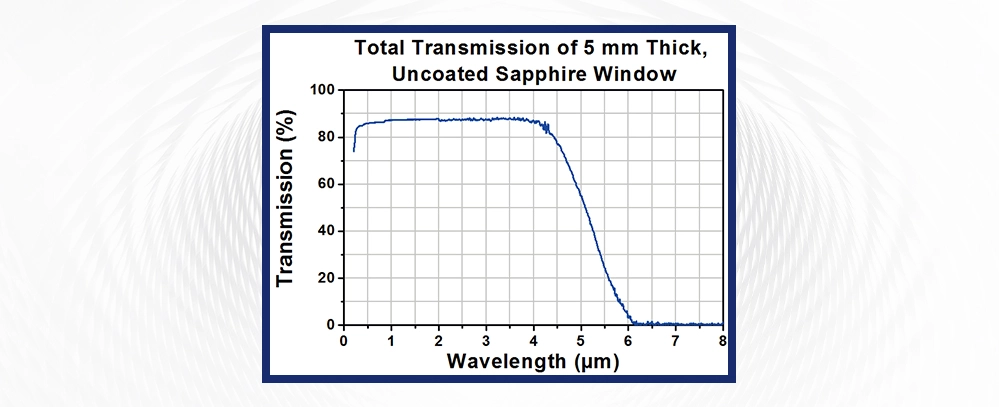Mar 31-2025
Sapphire (Al203) has outstanding surface hardness anwn. Strong hardness makescan only be scratched by a few materials other than itsit possible to make optical elements thinner than other substrates. Sapphire is chemically inert and does not dissIve in water, ordinary acidsand bases at up to 1000 C. Sapphire is transparent fror1 UV to lR (150 nm- 4.5 m). lt is often used in infrared la.ser systems. The ordinaryactive index is 1.747.The high-quality artificial sapphirerefractive index at 1.064 m is 1.754 and the unusual re;rystal materials have goodtransmittance in the 0.20-5.50 micron band. The infrared transmittance hardly varies with the temperature, and the transmittance to ultravioletand visible light is also very high. lt is widely used in infrared and far infrared military equipment. Because the hardness of sapphire is secondonly to that of diamond, and its structural strength is verhigh, the thickness of sapphire window made by enhancing the transmittance canwindows is thinner, which is very suitable for demandingapplicationsbe compared with that of general media. The quality of

A robust sapphire (Al2O3) glass window designed for infrared applications, offering excellent transmittance and durability.

A precision-crafted sapphire (Al2O3) glass prism engineered for precise manipulation of infrared light beams.

Extreme Hardness: Sapphire is one of the hardest materials, ensuring durability and resistance to scratches, ideal for harsh environments.
High Transparency: Sapphire has high transmission from UV to IR, suitable for optical windows and lenses in various wavelengths.
Chemical Resistance: Sapphire is chemically inert and resistant to many chemicals, making it suitable for corrosive environments.
Thermal Conductivity: Sapphire has high thermal conductivity, allowing for efficient heat dissipation in optical and electronic applications.